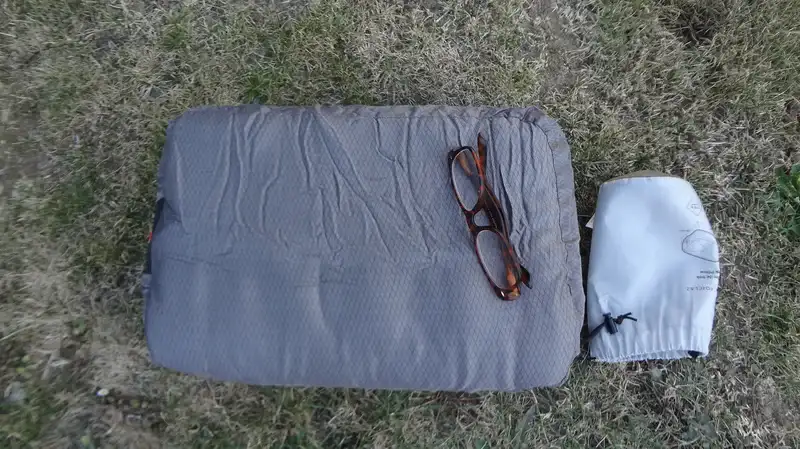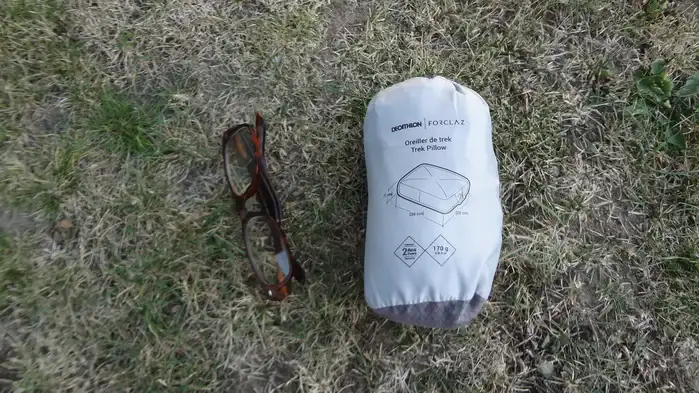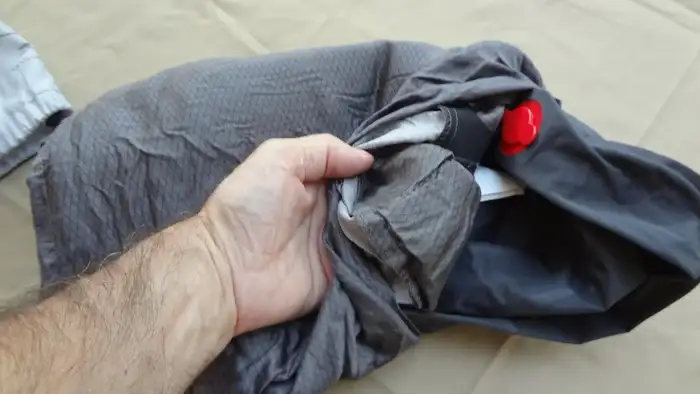The title contains the exact question in the form as I have seen it being asked, but it does not have to be long-distance only, or hiking only. The answer is the same, so keep reading.
A pillow may not be compulsory for outdoor sleeping and it may be easy to forget it and disregard it as unimportant. But if you want a proper sleep after your outdoor activity, to recharge and to be ready to continue next day, it may be necessary. This will depend also on what type of sleeper you are.

What is considered a long distance hike?
Perhaps it might be necessary to know the exact meaning of this term before I continue. I have seen various opinions about this, but I am not going to elaborate on this question.
Even if this is only about one or a few nights outdoor, you might want to have a pillow. You use it at home because you find it necessary, so why not on the trail as well.
Of course one could argue about the necessity of pillows, and there are some reasons in this. We have a grandchild in family, so yes, I am a proud grandfather. The baby currently sleeps without a pillow.
I do not know for how long this will be in my grandchild case, it depends on his parents. I see on the Internet that some suggest 1 year and some 2 years. But eventually, the boy will use a pillow as we all do. So indeed, a pillow is necessity in general.
But…are camping pillows worth it?
The picture below shows one of my outdoor pillows when packed. I put my glasses to show its packed size so that you can understand how much space it can take in the pack. If you are curious about it, this is the Forclaz MT500 Inflatable Backpacking Travel Pillow.
Its weight is equally important if you would carry it on the trail. I do not have a very precise scale at hand to measure the weight, but it is indeed light.

To get such numbers, you can check some of them on Amazon. For example this NEMO Fillo Elite Luxury Pillow weighs 8 ounces (227 g), and its a bit larger cousin weighs 12 ounces (340 g). So they are not light but they are Elite and Luxury as the name says.
But this Klymit Pillow X Inflatable Camping & Travel Pillow weighs only 3.2 ounces (91 g). So now you know what you can expect.
However, the question is if it is worth it. So if you are a back-sleeper and you normally do not use a high pillow, you might manage without an extra pillow. You can use the sack of your sleeping pad or your sleeping bag and put your bulky clothes inside and this may replace a pillow.
This can even work if you are a side sleeper and you have extra pieces of clothes like some thick fleece jacket or anything similar, your gloves, etc.
I am a side and stomach sleeper, and I normally love to have a pillow. But then again, I am not a long-distance hiker, in my case this is mostly about overnight tours, so adding such a piece is a luxury that I can afford.
Are inflatable pillows comfy?
I guess this will depend on how it is built, and this means how bulky and heavy it is. So my pillow shown in the pictures is definitely not the lightest and the most compact.
But it is not small, see the top picture above. This is also because it has a cover which is removable and padded. The picture below shows it partly removed to see how it looks:

Such a removable and padded cover adds a lot to its comfort, you can even wash it on the go and it will dry if you attach it to the pack when you walk.
Last time I was using this pillow on my overnight tour to Cima delle Nove in the Dolomites, so if you follow the link you can see more. Here is a video from that tour:
Can you use a normal pillow for camping?
The answer is yes, there is no reason why you would not do this. I do this all the time. So I normally sleep in the car, and there I use my pillow from home.
When I am in an official camp, I simply take it from the car and use in the car camping tent.
How about other people, do backpackers use pillows?
I have read an article published on Section Hiker site where a survey was performed with more than 700 people. The results are that more than 90% of people do use some sort of pillows.
The statistics was as follows:
- Almost 38% of people carry a commercial inflatable pillow.
- Around 51% make a pillow by bunching up clothes into a stuff sack.
- Only around 9% don’t use a pillow at all. It turns out that those are people who don’t use it at home, or people who sleep in a hammock.
- The remaining small percentage use some other items to serve as pillows. So these should be placed in the second group above.
All in all, an absolute majority indeed use pillows and this is normal to expect. If you use it at home then you would want to have it on the trail as well.
Final thoughts
In summary, there is no doubt that you can manage without a pillow on the trail, but it adds a lot to comfort and I would describe it as necessary.
It is likely that for many people this is the only item in the pack that is considered as a very desirable luxury. But I understand that this is a personal matter and we all have out habits and preferences.
Thank you for reading. For more texts of this type please check under the category FAQs here in the site. In particular, check my texts about backpacking and hut-to-hut tours differences and about bivy tents.
Subscribe to my weekly newsletter, this will keep you informed because I add texts here regularly. Let me know if you have questions or comments, there is a comment box below. Have a nice day.
Leave a Reply